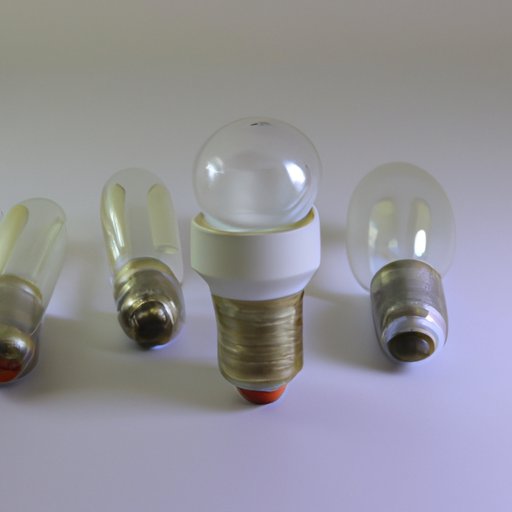Introduction
A light bulb is an electrical device that produces visible light when powered by electricity. It is one of the most important inventions in human history, providing artificial lighting for both practical and aesthetic reasons. But what exactly is happening inside a light bulb that produces this light? Let’s explore the physics behind how light bulbs work.

Exploring Different Types of Light Bulbs
Light bulbs come in a variety of types, each with its own unique physics behind how it works. The three most common types are incandescent bulbs, fluorescent bulbs, and LED bulbs.
Incandescent Bulbs
Incandescent bulbs are the traditional type of light bulb that has been around since the 19th century. They contain a filament made of tungsten, which is heated to a high temperature by an electric current flowing through it. This heat causes the filament to glow, producing visible light.
Fluorescent Bulbs
Fluorescent bulbs are filled with a low-pressure mercury vapor. When electricity passes through the gas, it produces ultraviolet (UV) radiation. This UV radiation then interacts with a phosphor coating on the inside of the bulb, producing visible light.
LED Bulbs
LED bulbs are the newest type of light bulb available. They use a semiconductor material to convert electricity into visible light. LED bulbs are much more energy-efficient than other types of bulbs and have a longer lifespan.
Anatomy of a Light Bulb
To better understand the physics behind how light bulbs work, let’s take a closer look at their anatomy. Every light bulb contains a few basic components:
- Bulb – This is the glass or plastic enclosure that holds all the other parts together.
- Base – This is the part of the bulb that connects to the electrical circuit.
- Filament – This is the component that produces the visible light when heated by the electric current.
Bulb Filaments
The filament is one of the most important components of a light bulb. Incandescent bulbs contain a thin wire made of tungsten that is heated to a high temperature by the electric current. Fluorescent bulbs usually contain electrodes made of a tungsten alloy, while LED bulbs contain a semiconductor material.

How Light Bulbs Convert Electricity into Visible Light
Now that we know the anatomy of a light bulb, let’s explore the physics behind how they convert electricity into visible light. To understand this process, it’s important to first understand the role of electricity in powering light bulbs.
Electricity is a form of energy that can be used to power a variety of devices, including light bulbs. When electricity flows through a light bulb, it creates an electrical circuit. This circuit consists of two components: a source of electricity (such as a battery or generator) and a load (the light bulb).
When electricity flows from the source to the load, it passes through the filament inside the light bulb. This causes the filament to heat up, producing visible light. This process is known as electrical resistance heating, and it is the basis of how light bulbs work.
Benefits of LED Light Bulbs
LED bulbs are becoming increasingly popular due to their energy efficiency and long lifespan. LED bulbs consume significantly less electricity than other types of bulbs, making them a cost-effective option for lighting. Additionally, LED bulbs can last up to 50,000 hours before needing to be replaced, whereas other types of bulbs may need to be replaced after just 1,000 hours of use.

History of the Invention of the Light Bulb
The invention of the light bulb was a major milestone in human history. Early experiments with electricity and light began in the late 18th century, with scientists like Humphry Davy attempting to create an electric arc lamp. However, these experiments were unsuccessful until Thomas Edison invented the incandescent light bulb in 1879.
Edison’s invention revolutionized the way people used artificial lighting. His light bulb used a carbon filament to produce light when heated by an electric current. This invention quickly became popular, and soon electric lighting was being used in homes and businesses around the world.
Conclusion
In conclusion, light bulbs work by converting electricity into visible light. Different types of light bulbs use different methods to achieve this, such as heating a filament or using a semiconductor material. LED bulbs are the most energy-efficient and longest-lasting type of light bulb available today. Finally, the invention of the light bulb was an important milestone in human history and is credited to Thomas Edison.
(Note: Is this article not meeting your expectations? Do you have knowledge or insights to share? Unlock new opportunities and expand your reach by joining our authors team. Click Registration to join us and share your expertise with our readers.)
